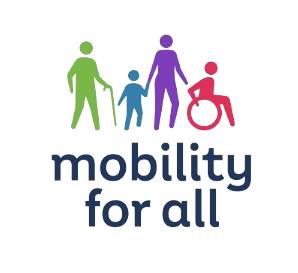Comprehensive studies and data underpin the Mobility for All program’s commitment to creating accessible, equitable, and affordable transportation for all ages and abilities. This research, including needs assessments and case studies, provides the foundation for the program’s strategic planning.
Studies and Data
In 2021, Mobility for All partnered with the Boulder County Youth Program to lead the Mobility and Access for All Ages and Abilities planning process, the working name of the 2021-2026 Boulder County Coordinated Human Services Transportation Services Plan. The plan builds off of the Boulder County Transportation Master Plan and serves as a new guide for Boulder County’s multimodal transportation policy as it pertains to people with special needs.
The Boulder County Electric Vehicle Case Study was developed in 2020 to ensure that equity is a key component of Boulder County’s EV goals. The case study research project explored nine EV Case Studies nationwide.
The Peak Ride Volunteer Driver Program Plan was developed in 2019 to empower older adults, people with disabilities, and caregivers living in mountain communities in Boulder County. Peak Ride conducted 10 community conversations with over 70 mountain residents to find out how mountain communities envision a volunteer driver program that is responsive to their unique needs.
The Boulder County Mobility for All Program: Low-Income Transportation Access Assessment was the Masters of Urban and Regional Planning Capstone Project for Nate Silverstein as a tool for Mobility for All to prioritize transportation programming at affordable housing sites. This Capstone Project explored which low-income areas within Boulder County were the least connected to multimodal transportation networks.
In 2016, Mobility for All developed a comprehensive approach to conducting outreach to the Latino community. The Latino Outreach Plan identifies strategies to improve access to transportation options.
In 2016, Mobility for All examined the travel patterns of low-income workers who are employed in Boulder County and live in a different county and how these patterns have changed since 2010.
In 2015, the county undertook a needs assessment to understand transportation issues and opportunities in the area. An advisory committee was formed to guide the process, and the findings were communicated to the county’s Local Coordinating Council. The Mobility for All Needs Assessment includes the following components:
- A review of previous efforts examining transportation needs of vulnerable populations
- An inventory of existing providers by service area
- Community analysis and mapping
- Examination of travel patterns
- Community feedback
- Inventory of spending
- Analysis of unmet needs and opportunities
- Strategies to meet needs


